Active 1861–1946 Founded 1861 | Type Navy | |
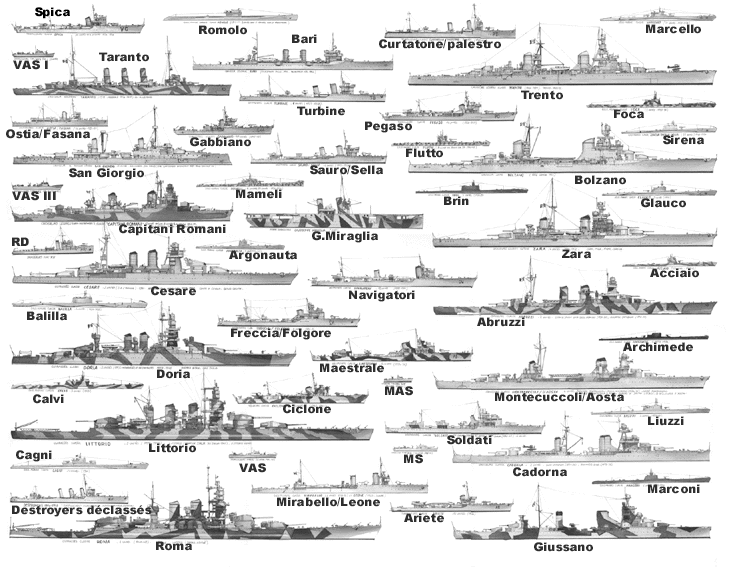 | ||
Notable commanders Similar Regia Aeronautica, Royal Italian Army, Decima Flottiglia MAS, Austro‑Hungarian Navy, Blackshirts | ||
Regia marina 8 settembre 1943 royal italian navy in technicolor
The Royal Navy (Italian: Regia Marina, [ˈrɛdʒa maˈrina]) was the navy of the Kingdom of Italy (Regno d'Italia) from 1861 to 1946. In 1946, with the birth of the Italian Republic (Repubblica Italiana), the Royal Navy changed its name to Military Navy (Marina Militare).
Contents
- Regia marina 8 settembre 1943 royal italian navy in technicolor
- Historia okr t w 30 regia marina i royal navy
- Origins
- Seven Weeks War
- Decline and resurgence
- Italo Turkish War
- World War I
- Interwar years
- Italo Ethiopian War
- Spanish Civil War
- Albania
- World War II
- Mediterranean
- Atlantic
- Red Sea
- Black Sea
- Lake Ladoga
- Far East
- The Armistice of 1943
- After World War II
- The peace treaty
- Battleships
- Cruisers
- Destroyers
- Aircraft carriers
- Seaplane carriers
- Heavy cruisers
- Light cruisers
- Aviation and Transport Cruisers
- Torpedo boats
- Submarines
- Auxiliary cruisers
- References
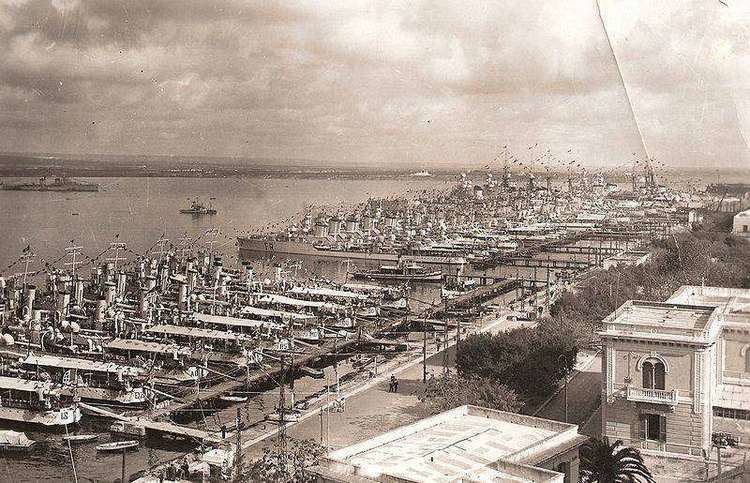
Historia okr t w 30 regia marina i royal navy
Origins
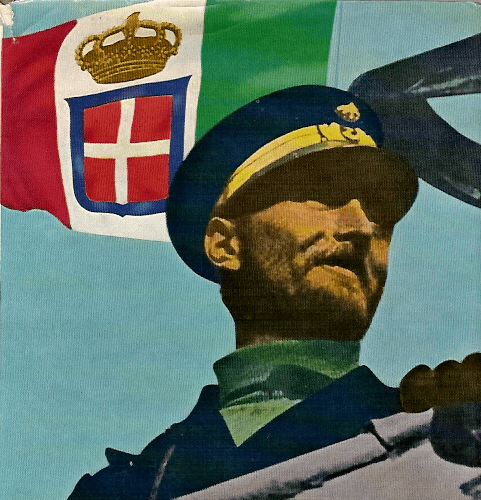
The Regia Marina was established on 17 March 1861 following the proclamation of the formation of the Kingdom of Italy. Just as the Kingdom was a unification of various states in the Italian peninsula, so the Regia Marina was formed from the navies of those states, though the main constituents were the navies of the former kingdoms of Sardinia and Naples. The new Navy inherited a substantial number of ships, both sail- and steam-powered, and the long naval traditions of its constituents, especially those of Sardinia and Naples, but also suffered from some major handicaps.

Firstly, it suffered from a lack of uniformity and cohesion; the Regia Marina was a heterogeneous mix of equipment, standards and practice, and even saw hostility between the officers from the various former navies. These problems were compounded by the continuation of separate officer schools at Genoa and Naples, and were not fully addressed until the opening of a unified Naval Academy at Livorno in 1881.

Secondly, unification occurred during a period of rapid advances in naval technology and tactics, as typified by the launch of Gloire by France in 1858, and later by the appearance of, and battle between, USS Monitor and CSS Virginia in 1862. These innovations quickly made older warships obsolete. Italy did not possess the shipyards or infrastructure to build the modern ships required, but the then Minister for the Navy, Admiral Carlo di Persano, launched a substantial programme to purchase warships from foreign yards.
Seven Weeks War
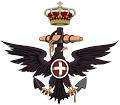
The new navy's baptism of fire came on 20 July 1866 at the Battle of Lissa during the Third Italian War of Independence (parallel to the Seven Weeks War). The battle was fought against the Austrian Empire and occurred near the island of Vis in the Adriatic sea. This was one of the few fleet actions of the nineteenth century, and as a major sea battle that involved ramming, it had a profound, though with hindsight a detrimental, effect on warship design and tactics.
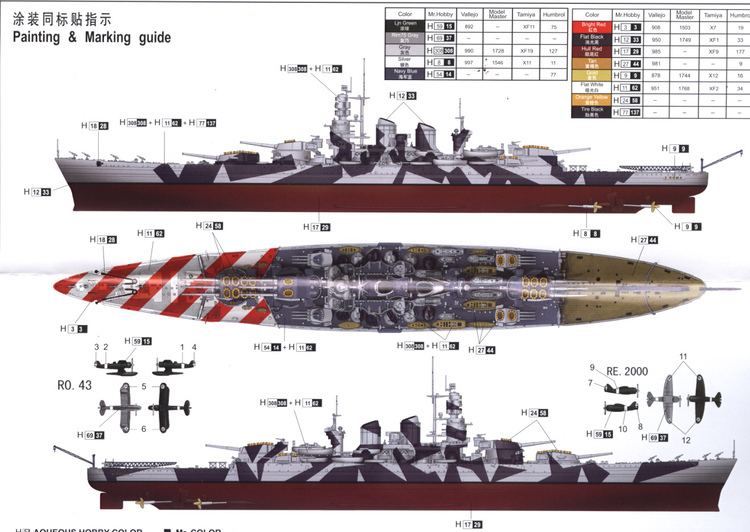
The Italian fleet, commanded by Admiral Persano, mustered 12 ironclad and 17 wooden-hulled ships, though only one, Affondatore, was of the most modern turret ship design. Despite a marked disadvantage in numbers and equipment, superior handling by the Austrians under Admiral Wilhelm von Tegetthoff resulted in a severe defeat for Italy, which lost two armoured ships and 640 men.
Decline and resurgence
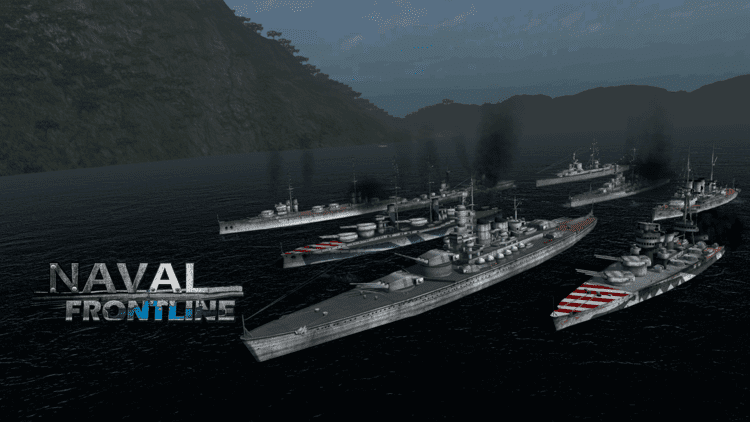
After the war, the Regia Marina passed through some difficult years as the naval budget was substantially reduced, thus impairing the fleet's efficiency and the pace of new construction; only in the 1870s, under Simone Pacoret de Saint Bon's ministry, did the situation begin to improve. In 1881, the battleship Caio Duilio was commissioned, followed in 1882 by the battleship Enrico Dandolo; at the time these were the most powerful warships in the world, and signalled the Italian fleet's renewed power. In 1896 the corvette Magenta completed a circumnavigation of the world. The following year the Regia Marina conducted experiments with Guglielmo Marconi in the use of radio communications. 1909 saw the first use of aircraft with the fleet. An Italian naval officer, Vittorio Cuniberti, was the first in 1903 to envision in a published article the all-big gun battleship design, which would be later come to be known as dreadnought.
Italo-Turkish War
In 1911 and 1912, the Regia Marina was involved in the Italo-Turkish War against forces of the Ottoman Empire. As the majority of the Ottoman fleet stayed behind the relative safety of the Dardanelles, the Italians dominated the Mediterranean during the conflict winning victories against Ottoman light units at the Prevenza and the Battle of Beirut. In the Red Sea the Italian forces were vastly superior to those of the Ottomans who only possessed a squadron of gunboats there. These were destroyed while attempting to withdraw into the Mediterranean at the Battle of Kunfuda Bay.
World War I
Before 1914, the Kingdom of Italy built six dreadnought battleships: (Dante Alighieri as a prototype; Giulio Cesare, Conte di Cavour and Leonardo da Vinci of the Conte di Cavour class; and Andrea Doria and Caio Duilio of the Andrea Doria class), but they did not participate in major naval actions in World War I, as they were positioned to intercept a major sortie of the Austro-Hungarian Navy which never came.
During the war, the Regia Marina spent its major efforts in the Adriatic Sea, fighting the Austro-Hungarian Navy. The resulting Adriatic Campaign of World War I consisted mainly of Austro-Hungarian coastal bombardments of Italy's Adriatic coast, and wider-ranging German/Austro-Hungarian submarine warfare into the Mediterranean. Allied forces mainly limited themselves to blockading the German/Austro-Hungarian navies in the Adriatic, which was successful in regards to surface units, but failed for the submarines, which found safe harbours and easy passage into and out of the area for the whole of the war. Considered a relatively minor part of the naval warfare of World War I, it nonetheless tied down significant forces.
For most of the war the Italian and Austro-Hungarian navies each kept a relatively passive watch over their adversaries. The Italian fleet lost the pre-dreadnought battleship Benedetto Brin at Brindisi (27 September 1915) and the dreadnought Leonardo da Vinci at Taranto (2 August 1916) due to a magazine explosion (although there were rumours of Austrian sabotage). In the last part of the war, the Regia Marina developed new weapons: the MAS boats, that sank the Austro-Hungarian battleship SMS Szent István in the Adriatic Sea on 10 June 1918; and an early type of human torpedo (Mignatta) entered the harbour of Pula and sank the Austro-Hungarian flagship SMS Viribus Unitis on 1 November 1918 shortly before the end of hostilities. The battleship SMS Tegetthoff (sister of the former two) was handed over to Italy as a war prize in 1919.
Interwar years
During the interwar years the Italian government set about modernizing the Regia Marina in a way that could enable it to reach dominance over the Mediterranean Sea. Italian naval construction was limited by the Washington Naval Conference. The 1922 treaty required a parity in naval forces between the Italian and French navies, with equality in total displacement in battleships and carriers. The treaty influenced the development of the Italian fleet over the years between the two world wars. Between the late twenties and early thirties a construction program began, focusing first on cruisers up to 10,000 tons, followed by the building of destroyers and submarines, and lastly the construction of the new Littorio-class battleships; plans were also put in place to modernize the Conte di Cavour-class and Andrea Doria-class battleships. Much of these new naval units were responses to French naval constructions, as the Marine nationale was seen until the mid 1930s as the most likely enemy in a hypothetical conflict.
The Regia Marina chose to build fast ships armed with longer ranged guns to give the Italian vessels the ability to minimize close contact with vessels of the Royal Navy, whose crews were more experienced and efficient. In theory this would allow them to engage or break off at their own choosing, and would allow them to hit the enemy when he could not yet hit back. New guns were developed with longer ranges than their British counterparts of similar caliber. Speed was emphasized in their new construction. Subsequently, newer Italian cruisers such as the Giovanni dalle Bande Nere were built with a newly designed and relatively thin armour. The armor of these vessels was 24 mm, as compared to 102 mm on their contemporaries, the British Leander class. This would have a decisive role in a number of naval battles, including the Battle of Cape Spada.
The modernization work on the four Great War era battleships turned into a significant reconstruction project, with only 40% of the original structures being left. The ship's guns were upgraded in main armament, going from 13 guns of 305mm diameter, to 10 guns of 320mm diameter. The middle turret and the vessel's central tower were eliminated. To increase speed the coal-fired boilers were replaced with modern oil-fired boilers and ten meters were added to the ship's length to improve the coefficient of fineness. Though the ships were improved, they still were not an equal match for the Queen Elizabeth-class battleships and the Renown-class battlecruisers, both of which carried larger guns and heavier armour.
Though scientific research on tracking devices such as radar and sonar was being conducted in Italian universities and military laboratories by men such as Ugo Tiberio and Guglielmo Marconi, the conservative Italian leadership had little interest in these new technologies, and did not use them to improve the effectiveness of the Italian vessels. This was mainly due to the influence of Admiral Domenico Cavagnari, whom Mussolini appointed as Chief of Staff of the Navy in 1933, and whom he later promoted to Secretary of the Navy. Likewise technological advancement in radio range finders and gunnery control devices for night combat were not incorporated. Regarding such devices, Cavagnari emphasized "not wanting traps in your way". Writing to Admiral Iachino, he wrote "..procedere con estrema cautela nell'accettare brillanti novità tecniche che non siano ancora collaudate da una esperienza pratica sufficientemente lunga..", which can be translated to "... proceed with extreme caution regarding brilliant technical innovations that have not yet been tested or with which there is no practical experience." Thus, the Italian navy entered the Second World War with a marked technical inferiority to the British Navy. German General Albert Kesselring, overall commander of Axis forces in the Mediterranean, observed that the Italian navy was "a good weather" force, unable to operate effectively at night or in heavy seas.
Two training ships were built during this period, in addition to the effort to modernize and re-equip the combat vessels of the navy. These were square rigged school ships the Regia Marina ordered in 1925. The sailing ships followed a design by Lieutenant Colonel Francesco Rotundi of the Italian Navy Engineering Corps, reminiscent of ships of the line from the Napoleonic era. The first of these two ships, Cristoforo Colombo, was put into service in 1928 and was used by the Italian Navy for training until 1943. After World War II, this ship was handed over to the Soviet Union as part of war reparations and was shortly afterwards decommissioned. The second ship of the design was Amerigo Vespucci. The ship was built in 1930 at the (formerly Royal) Naval Shipyard of Castellammare di Stabia (Naples). She was launched on 22 February 1931, and was put into service in July of that year. She is still being used to this day.
In 1928, the unified command of the "Armata Navale" was abolished, and the fleet was divided in two squadrons (Squadre navali), one based at La Spezia and the other based at Taranto.
Italo-Ethiopian War
The Regia Marina played a limited role in the invasion of Ethiopia. While the Ethiopian Empire was landlocked, the navy was instrumental in delivering and supplying the invasion forces through Somali and Eritrean ports.
Spanish Civil War
At the time of the Italian intervention in the Spanish Civil War, the Regia Marina sent naval units in support of the Italian Corps of Volunteer Troops (Corpo Truppe Volontarie). Approximately 58 Italian submarines took part in operations against Republican naval forces of Spain. These submarines were organized in a Submarine Legion and complemented German U-boat operations as part of Operation Ursula. At least two Republican freighters, one Soviet and another Panamanian were either sunk or forced to run aground by Italian destroyers near the Strait of Sicily. Two light cruisers took part in the shelling of Barcelona and Valencia in 1937, resulting in the deaths of more than 30 civilians.
Albania
In 1939, the Regia Marina supported the invasion of Albania. All ground forces involved in the invasion had to cross the Adriatic Sea from mainland Italy and the crossings were accomplished without incident.
World War II
On 10 June 1940, following the German invasion of France and the lowlands, the Kingdom of Italy declared war on France and the United Kingdom and entered World War II. Italy went to war with the fourth largest navy in the world. Italian dictator Benito Mussolini saw the control of the Mediterranean Sea as an essential prerequisite for expanding his "New Roman Empire" into Nice, Corsica, Tunis and the Balkans. Italian naval building accelerated during his tenure. Mussolini described the Mediterranean as "Mare Nostrum" (Our Sea).
Before the declaration of war, Italian ground and air forces prepared to strike at the beaten French forces across the border in the Italian invasion of France. By contrast, the Regia Marina prepared to secure the lines of communications between Italy, Libya and the East African colonies. The Italian High Command (Comando Supremo) did not approve of the plan devised by the Italian Naval Headquarters (Supermarina) to occupy a weakly defended Malta, which proved a crucial mistake. The British, thinking Malta could not be defended due to the proximity of Italian air bases in Italy, Sicily, and Libya, had put little effort into bolstering the islands' defences. Thus, at the outset of the war there were only 42 anti-aircraft guns on the island and twelve Gloster Sea Gladiators, half sitting in crates at the wharf.
Entering the war, the Regia Marina was operating under a number of limitations. Though significant assets were available to challenge the Royal Navy for control of the Mediterranean, there had been a lack of emphasis on the incorporation of technological advances such as radar and sonar. This meant that in night engagements or foul weather, the Italian ships were unable to detect the approach of their British adversaries. When engaged, they could only range their guns if they were able to visually locate their targets.
The Regia Marina had six battleships with which to contend for control of the Mediterranean, the four most modern of which were being re-fit at the outbreak of the war. In addition to the six capital ships, the Italians had 19 cruisers, 59 destroyers, 67 torpedo boats, and 116 submarines. Though the Regia Marina had a number of fast new cruisers with good range in their gunnery, they were lightly built and had inadequate defensive armor. Numerically the Italian fleet was formidable, but there were a large number of older vessels, and the service suffered in general from insufficient time at sea for crew training.
Italy's lack of raw materials meant that they would have great difficulty building new ships over the course of the war. Thus, the assets they did have were handled with caution by Supermarina. Whereas Allied commanders at sea had a fair degree of autonomy and discretion to fight their vessels as circumstance allowed, Italian commanders were required to confer with their headquarters before committing their forces in an engagement that might result in their loss. This led to delays in arriving at decisions and actions being avoided, even when the Italians had a clear advantage. An example occurred during "Operation Hats", in which the Regia Marina had superior forces but failed to commit them to take advantage of the opportunity.
A further key disadvantage in the convoy support and interception battles that dominated the Battle of the Mediterranean was the intelligence advantage the British held in their Ultra intercept system. Ultra decrypts provided the Royal Navy with key information on convoy routes, times of departure, time of arrival, and make up of the convoy.
The warships of the Regia Marina had a general reputation as being well-designed. Italian small attack craft lived up to expectations and were responsible for many successful actions in the Mediterranean. Though Italian warships lacked radar, this was partly offset in fair weather by good optical rangefinder and fire-control systems.
The Italian Navy lacked a fleet air arm. The high command had reasoned that since the Italian navy would be operating solely in the Mediterranean, their vessels would never be far from an airfield, thus the time and resources needed to develop a naval air arm could be directed elsewhere. This proved problematic on a number of occasions. Though the Italians did have the aircraft carriers Aquila and Sparviero under construction at the start of the war, neither one was ever completed. Lastly, the lack of natural oil reserves and subsequent shortage of oil precluded extensive fleet operations.
Mediterranean
The Regia Marina and the Royal Navy engaged in a two-and-a-half-year struggle for control of the Mediterranean. The Regia Marina's primary goal was to support the Axis forces in North Africa while obstructing the supply route to Alexandria and cutting off supplies to Malta. The Royal Navy's major effort was to maintain supply to the military forces and people of Malta, and secondarily to interdict convoy shipments to North Africa. The first major action occurred on 11 November 1940 when the British aircraft carrier HMS Illustrious launched two waves of Swordfish torpedo-bombers in a surprise raid against the Italian Fleet moored at the naval base of Taranto. The raid came in undetected, and three battleships were sunk. Another major defeat was inflicted on the Regia Marina at Cape Matapan, where the British Royal Navy and the Royal Australian Navy intercepted and destroyed three heavy cruisers (Zara, Pola and Fiume; all of the same class) and two Oriani-class destroyers in a night ambush, with the loss of over 2300 seamen. The Allies had Ultra intercepts, which uncovered the Italian movements, and radar, which enabled them to locate the ships and range their weapons at distance and at night. The better air reconnaissance skills of the British Royal Navy's Fleet Air Arm and their close collaboration with surface units were other major causes of the Italian debacle.
On 19 December 1941, the battleships HMS Queen Elizabeth and HMS Valiant were sunk in shallow water by limpet mines planted by Italian manned torpedoes, knocking both out of the conflict for almost two years. This action, coming on the heels of the loss of the Prince of Wales and Repulse in the South China Sea, significantly weakened the surface strength of the Royal Navy, making it difficult for them to challenge control of the eastern Mediterranean.
On the night of 19 December, Force K, comprising three cruisers and four destroyers based at Malta, ran into an Italian minefield off Tripoli. Three cruisers struck mines, with the cruiser HMS Neptune lost, along with the destroyer HMS Kandahar. In addition, another destroyer was seriously damaged. All told 800 seamen were lost, and Force K, which had been effectively interdicting Axis convoys, was put out of action. This series of successes allowed the Regia Marina to achieve naval supremacy in the central Mediterranean. Coupled with an intensive bombing campaign against Malta, the Axis supply routes from southern Europe to North Africa were almost untouched by the British Royal Navy or its allies for the next several months.
The Italian fleet went on the offensive, blocking or mauling three large Allied convoys bound for Malta. This led to a number of naval engagements, including the Second Battle of Sirte in March 1942, Operation Harpoon and Operation Vigorous, (known as the "Battle of Mid-June") and Operation Pedestal (the "Battle of Mid-August"). All of these engagements were favourable to the Axis. Despite this activity, the only real success of the Italian Fleet was the aerial and surface attacks on the Harpoon convoy. These attacks sank several Allied warships and damaged others. Only two transports of the original six in the convoy reached Malta. This was an undisputed squadron-sized victory for Italian surface forces in World War II.
Despite the heavy losses suffered by the merchantmen and escorting forces of convoy Pedestal, the oil and supplies brought through allowed the near starving island of Malta to continue. With Allied landings in North Africa, Operation Torch, in November, the fortunes of war turned against the Italians. Their sea convoys were harassed day after day by the aerial and naval supremacy of the Allies. The maritime lane between Sicily and Tunisia became known as the "route of death". After years of back and forth, the Axis forces were forced to surrender in Tunisia, bringing the campaign for North Africa to a close.
The Regia Marina performed well and bravely in its North African convoy duties, but remained at a technical disadvantage. The Italian ships relied on speed but could easily be damaged by shell or torpedo, due to their relatively thin armour. The fatal and final blow to the Italian Navy was a shortage of fuel, which forced its main units to remain at anchor for most of the last year of the Italian alliance with Germany.
Atlantic
From 10 June 1940, submarines of the Regia Marina took part in the Battle of the Atlantic alongside the U-Boats of Nazi Germany's Kriegsmarine. The Italian submarines were based in Bordeaux, France at the BETASOM base. While more suited for the Mediterranean Sea than the Atlantic Ocean, the thirty-two Italian submarines that operated in the Atlantic sank 109 Allied ships for a total of 593,864 tons.
The Regia Marina even planned an attack on New York harbor with midget submarines for December 1942, but this plan was delayed for many reasons and was never carried out.
Red Sea
From 10 June 1940, the Regia Marina Red Sea Flotilla, based in Massawa, Eritrea, posed a potential threat to Allied shipping crossing the Red Sea between the Indian Ocean and the Mediterranean Sea. Initially, the East African Campaign went well for Italy. In August 1940, the threat to Allied passage of the Red Sea was increased after the Italian conquest of British Somaliland. This allowed the Italians the use of the port of Berbera in what had been British Somaliland. In January 1941, British and Commonwealth forces launched a counterattack in East Africa and the threat posed by the Red Sea Flotilla disappeared when Italian East Africa fell.
Much of the Red Sea Flotilla was destroyed by hostile action during the first months of war or when the port of Massawa fell in April 1941. However, there were a few survivors. In February 1941, prior to the fall of Massawa, the colonial ship Eritrea and the auxiliary cruisers Ramb I and Ramb II broke out and sailed to Kobe, Japan. While Ramb I was sunk by the New Zealand cruiser HMNZS Leander off the Maldives, Eritrea and Ramb II made it to Kobe. As the port of Massawa was falling, four submarines—Guglielmo, Gauleo Ferraras, Perla, and Archimede—sailed south from Massawa, rounded the Cape of Good Hope and ultimately sailed to German occupied Bordeaux, France. One or two Italian merchant ships from the Red Sea Flotilla made it to Vichy French-controlled Madagascar.
On 10 June 1941, the British launched Operation Chronometer and a battalion from the British Indian army was landed at Assab, the last Italian-held harbour on the Red Sea. By 11 June, Assab had fallen. On 13 June, two days after the fall, the Indian trawler Parvati became the last naval casualty of the East African Campaign when it struck a moored mine near Assab.
Black Sea
In May 1942, at German request, the Regia Marina deployed four 24 ton anti-submarine motorboats (Motoscafo Anti Sommergibile, MAS), six CB-class midget submarines, five torpedo motorboats, and five explosive motorboats to the Black Sea. The vessels were transported overland to the Danube River at Vienna, Austria, and then transported by water to Constanca, Romania. The flotilla had an active and successful campaign, based at Yalta and Feodosia.
After Italy quit the war, most of the Italian vessels on the Black Sea were transferred to Nazi Germany's Kriegsmarine. By August 1944, they were ultimately captured by Soviet forces when Constanca was captured. The six submarines were transferred to the Royal Romanian Navy.
Lake Ladoga
The Regia Marina operated a squadron of four MAS boats on Lake Ladoga during the Continuation War (1941–1944). As part of Naval Detachment K, German, Italian, and Finnish vessels operated against Soviet gunboats, escorts and supply vessels during the Siege of Leningrad between 21 June and 21 October 1942. The Italian vessels were ultimately turned over to Finland.
Far East
The Regia Marina had a naval base in the concession territory of Tiensin in China. The primary Italian vessels based in China were the mine-layer Lepanto and the gunboat Carlotto. During World War II, Italian supply ships, auxiliary cruisers and submarines operated throughout the waters of the Far East, often in disguise. The Italians also utilized Japanese-controlled port facilities such as Shanghai, China, and Kobe, Japan.
Seven Italian submarines operating from France were converted by the Italians into "transport submarines" in order to exchange rare or irreplaceable trade goods with Japan. The submarines Bagnolini, Barbarigo, Comandante Cappellini, Giuseppe Finzi, Reginaldo Giuliani, Enrico Tazzoli, and Luigi Torelli were converted for service with the Monsun Gruppe ("Monsoon Group"). The name of Comandante Cappellini was changed to Aquila III.
Twelve additional R-class blockade running transport submarines were specifically designed for trade with the Far East, but only two of these vessels were completed before Italy quit the war. Both of these submarines were destroyed by Allied action almost as soon as they were launched.
The Armistice of 1943
In 1943, Italian dictator Benito Mussolini was deposed and the new Italian government agreed to an armistice with the Allies. Under the terms of this armistice, the Regia Marina had to sail its ships to an Allied port. Most sailed to Malta, but a flotilla from La Spezia headed towards Sardinia. This was intercepted and attacked by German aircraft and the battleship Roma was sunk by two hits from Fritz X guided glide-bombs. Among the 1600 sailors killed on board Roma was the Italian Naval Commander-in-Chief, Admiral Carlo Bergamini.
As vessels became available to the new Italian government, the Italian Co-Belligerent Navy was formed to fight on the side of the Allies. Other ships were captured in port by the Germans or scuttled by their crews. Few Regia Marina crews chose to fight for Mussolini's new fascist regime in northern Italy, the Italian Social Republic (Repubblica Sociale Italiana, RSI). Mussolini's pro-German National Republican Navy (Marina Nazionale Repubblicana) hardly reached a twentieth the size attained by the co-belligerent Italian fleet. In the Far East, the Japanese occupied the Italian concession territory of Tiensin.
There was little use for the surrendered Italian battleships and there was doubt about the loyalties of the crews, so these ships were interned in Egypt. In June 1944, the less powerful battleships (Andrea Doria, Caio Duilio and Giulio Cesare) were allowed to return to Augusta harbour in Sicily for training. The others, Vittorio Veneto and Italia (ex-Littorio), remained at Ismaïlia in the Suez Canal until 1947. After the war, Giulio Cesare was passed to the Soviet Union.
In the Co-belligerency period, until "VE" (Victory in Europe) Day, Italian light cruisers participated in the naval war in the Atlantic Ocean with patrols against German raiders. Smaller naval units (mainly submarines and torpedo boats) served in the Mediterranean Sea. In the last days of war, the issue of whether Italian battleships and cruisers should participate in the Pacific War was debated by the Allied leaders.
There were also Italian naval units in the Far East in 1943 when the new Italian government agreed to an armistice with the Allies. The reactions of their crews varied greatly. In general, surface units, mainly supply ships and auxiliary cruisers, either surrendered at Allied ports (Eritrea at Colombo, Ceylon) or, if in Japanese controlled ports, they were scuttled by their own crew (Conte Verde, Lepanto, and Carlotto at Shanghai). Ramb II was taken over by the Japanese in Kobe and renamed Calitea II. Four Italian submarines were in the Far East at the time of the armistice, transporting rare goods to Japan and Singapore: Ammiraglio Cagni, Comandante Cappellini (Aquilla III), Reginaldo Giuliani, and Luigi Torelli. The crew of Ammiraglio Cagni heard of the armistice and surrendered to the Royal Navy off Durban, South Africa. Comandante Cappellini, Reginaldo Giuliani, and Luigi Torelli and their crews were temporarily interned by the Japanese. The boats passed to German U-boat command and, with mixed German and Italian crews, they continued to fight against the Allies. The German navy assigned new officers to the three submarines. The three were renamed UIT-23, UIT-24 and UIT-25 and took part in German war operations in the Pacific. Reginaldo Giuliani was sunk by the British submarine HMS Tally-Ho in February 1944. In May 1945, the other two vessels were taken over by the Japanese Imperial Navy when Germany surrendered. About twenty Italian sailors continued to fight with the Japanese. Luigi Torelli remained active until 30 August 1945, when, in Japanese waters, this last Fascist Italian submarine shot down a North American B-25 Mitchell bomber of the United States Army Air Forces.
After World War II
After the end of hostilities, the Regia Marina started a long and complex rebuilding process. At the beginning of the war, the Regia Marina was the fourth largest navy in the world with a mix of modernised and new battleships. The important combat contributions of the Italian naval forces after the signing of the armistice with the Allies on 8 September 1943 and the subsequent cooperation agreement on 23 September 1943 left the Regia Marina in a poor condition. Much of its infrastructure and bases were unusable and its ports mined and blocked by sunken ships. However, a large number of its naval units had survived the war, albeit in a low efficiency state. This was due to the conflict and the age of many vessels.
The vessels that remained were:
On 2 June 1946, the Italian monarchy was abolished by a popular referendum. The Kingdom of Italy (Regno d'Italia) ended and was replaced by the Italian Republic (Repubblica Italiana). The Regia Marina became the Navy of the Italian Republic (Marina Militare).
The peace treaty
On 10 February 1947, a peace treaty was signed in Paris between the Italian Republic and the victorious powers of World War II. The treaty was onerous for the Italian Navy. Apart from territorial and material losses, the following restrictions were imposed:
The treaty also ordered Italy to put the following ships at the disposals of the victorious nations United States, Soviet Union, Great Britain, France, Greece, Yugoslavia, and Albania as war compensation:
The convoy escort Ramb III ultimately became the Yugoslav Navy yacht Galeb. Galeb was used by the late President of the Socialist Federal Republic of Yugoslavia Marshal Josip Broz Tito on his numerous foreign trips and to entertain heads of state.
